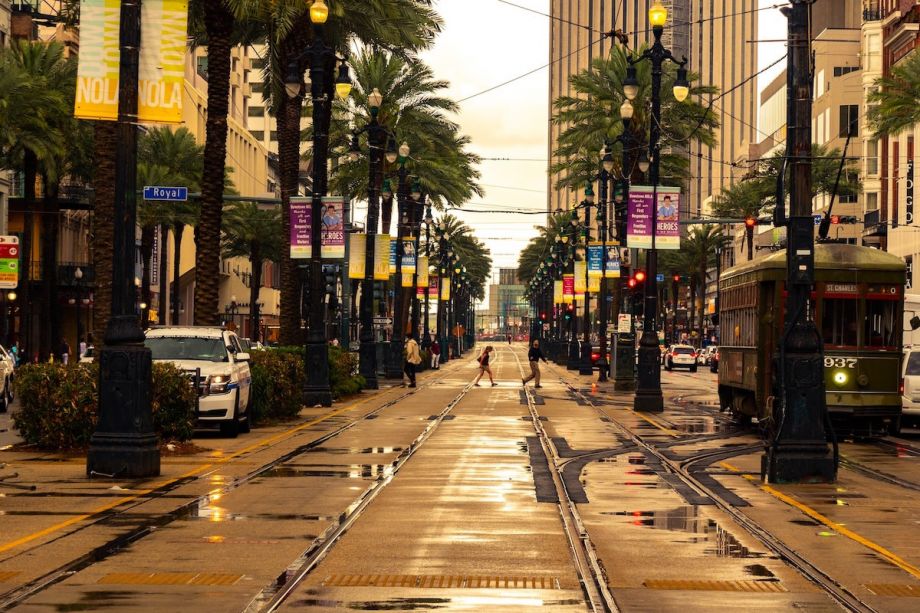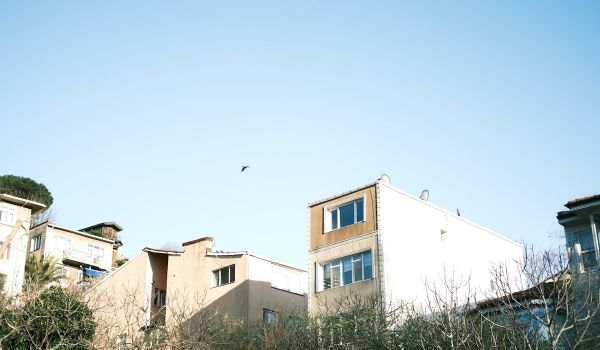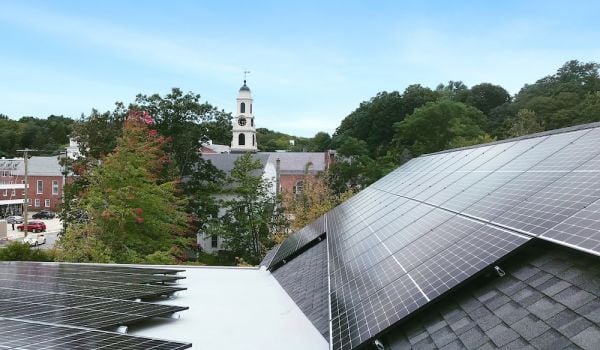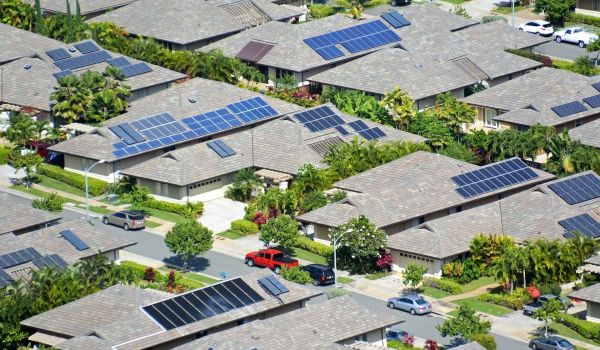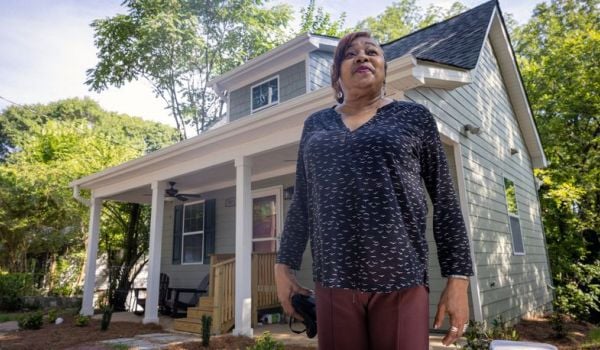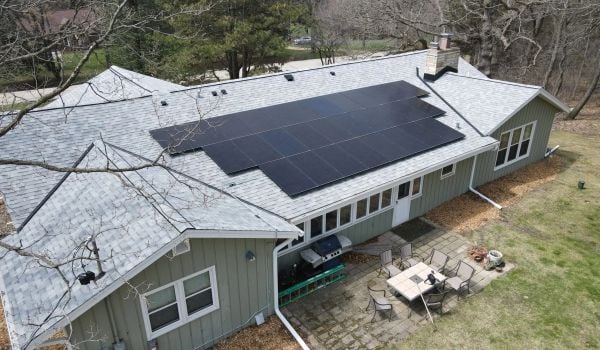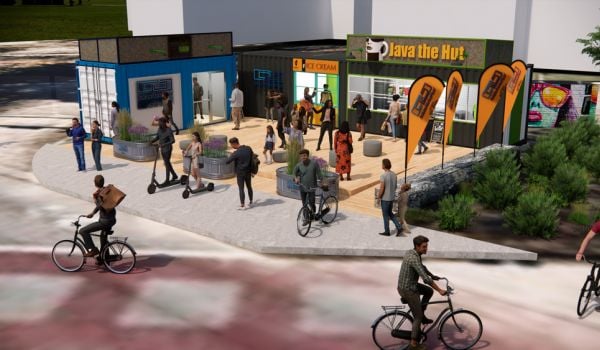Even as politicians work to reenact Jim Crow-era silences about how white supremacy has shaped America, reparations are on the table as they have never been before.
After an upswell of grassroots organizing in 2020, we’re seeing a new level of recognition that descendants of enslaved people, whose labor was stolen, are owed a debt.
While that organizing has fueled a collective understanding of the need for repair, progress has been bogged down by the weight of that debt and questions about how such debts can be repaid. These questions have been taken up across the country, from the California Reparations Task Force to the cities of Boston, Evanston, Kansas City, Knoxville and St. Louis, among others.
As we argue in our chapter on reparations in the new book “Turning Up the Heat: Urban Political Ecology for a Climate Emergency,” an array of decentralized policies can work together toward these reparative ends.
As the abolitionist Geographer Ruth Wilson Gilmore said over a decade ago: “Policy is the new theory. Policy is to politics what method is to research. It’s a script for enlivening some future possibility — an experiment.” In this vein, we see experimental pathways through age-old questions of reparations in new policy approaches.
Experimentation with land and energy policy holds abundant potential to make concrete progress toward reparations and embrace a “Black right to urban life.” Two such case studies in Atlanta and New Orleans show how cities are bringing reparational policy into deeper conversation with various aspects of urban planning and policy-making.
Land and housing reparations in Atlanta
The question of land and the Black right to urban life is a central priority in Atlanta, given the city’s lack of affordable housing.
In 2019, Atlanta’s former Mayor Keisha Lance Bottoms ran on a platform to make housing in the city more affordable, releasing Atlanta’s Housing Affordability Action Plan. Among other strategies, the plan included a program to “expedite the development of affordable housing on vacant publicly owned land.” In Atlanta, the city government and quasi-public agencies (including the housing authority, the economic development authority, Invest Atlanta, Atlanta Beltline Inc. and the Fulton County Land Bank) hold more than 1,300 acres of vacant land.
Land banks were created as a public administrative mechanism to acquire vacant, abandoned and tax-delinquent properties for reuse or development. Reuse, we argue, should take reparations as part of their objective.
The incorporation of the land bank to reimagine vacant property is of special note given the historical connection between land banking and Black radical calls for reparations for slavery.
In the 1969 Black Manifesto, Student Nonviolent Coordinating Committee leader James Foreman joined other Black leaders in making a series of specific demands relating to reparational policy, including the use of land banks.
Founded in 1991, Atlanta’s land bank was the result of organizing through a Housing Forum coalition of public and community groups that met regularly at the Atlanta Food Bank. Atlanta Community Food Bank founder Bill Bolling and affordable housing advocate John Abercrombie had been interested in acquiring abandoned homes for the Atlanta-based Habitat for Humanity and saw that land banking could make this possible. With others, they worked to secure the authorizing legislation enabling the land bank to extinguish the tax obligation of a vacant, abandoned or foreclosed property so that it could be repurposed to house low- and fixed-income residents in Atlanta.
Atlanta’s land bank, among the first established in the U.S., remains unique in having a mandate to use the properties it acquires to develop market-rate and affordable housing. Land banks already exist in cities throughout the U.S. and these same policy mechanisms could be enabled to acquire a land base through which to structure housing in the spirit of land reparations.
Land has always been central to the freedom dreams of reparations. In 1865, Reverend Garrison Frazier requested land for his parishioners and all formerly enslaved people from Union General William Tecumseh Sherman and others that resulted (albeit briefly) in Special Field Order 15, from which the famous language of 40 acres came.
As Frazier explained: “The way we can best take care of ourselves is to have land, and turn it and till it by our labor — that is, by the labor of the women, and children, and old men — and we can maintain ourselves and have something to spare.”
Energy reparations in New Orleans
In the aftermath of Hurricane Katrina, the State of Louisiana offered substantial property tax credits for home restoration to allow residents to deduct the cost of rebuilding after the storm.
In 2007, the law was amended to include a significant subsidy to install residential solar energy, funded in part through severance and excise taxes on oil and gas and regressive sales taxes. The development of solar energy in New Orleans became another moment of redistribution, as the public subsidized residential solar for homeowners whose tax burden and expendable income were high enough to take advantage of the tax credits.
In a 2019 interview, Louisiana Alliance for Affordable Energy executive director Logan Burke detailed the New Orleans City Council’s effort to authorize the first “community solar” program in the South. That, she said, would mean “that rather than depending on the utility itself to procure renewables, a community can invest in and own solar resources and other renewable resources and reduce their bills, lock[ing] in the cost of that energy over time.”
In attempting to lower the cost of energy and democratize access to solar, these ongoing developments in New Orleans can also be reparative.
Community solar programs allow customers to be credited for energy usage provided by solar panels installed in their community at alternative locations beyond their homes. Residents who purchase or are allocated a share of a community-owned solar array receive credit on their electric bills for the power these panels produce. Community solar eliminates financial and infrastructural impediments for renters, as well as other customers lacking adequate infrastructure or the financial means to acquire residential solar.
The history of racial discrimination in home mortgage lending — as Ta-Nehisi Coates analyzed in his essay “The Case for Reparations” — as well as racial disparities in homeownership that widened in New Orleans post-Katrina contribute to racial disparities in energy burden. That’s the share of household income spent on energy.
New Orleans has among the highest energy burdens for low-income residents in America. That makes community solar a tangible policy intervention that could reduce racialized disparities in energy costs linked to historical disparities in home ownership.
Policy experimentation by the New Orleans City Council, which introduced community solar among other reforms to regulate the electric utility, works to build community assets and facilitate community control over energy infrastructures.
Imagine how far the $147 million dollars that Louisiana invested in tax credits for residential solar infrastructure for homeowners could go if invested as the start-up costs for community solar projects — and how many more people this could help by reducing energy poverty and housing insecurity for Black New Orleanians.
Using urban policy to decentralize reparative action
For Ta-Nehisi Coates, reparations mean that “the full acceptance of our collective biography and its consequences – is the price we must pay to see ourselves squarely.”
Theory can make valuable contributions to the conversation about true reparations, but not without being accountable to the history and visions of Black communities that were implemented through policy. Everyday utopias as envisioned by Fannie Lou Hamer, Ella Baker, James Foreman, Rev. Garrison Frazier and other Black luminaries did so by imagining policy that led to concrete action.
Land banking in Atlanta and community solar in New Orleans both offer real potential for emplacing reparative politics in U.S. Southern cities produced both through white supremacist and color-blind urban planning as well as Black spatial imaginaries.
Nik Heynen is a Distinguished Research Professor in the Department of Geography at the University of Georgia and Visiting Scholar at Spelman College. Nikki Luke is an Assistant Professor in the Department of Geography and Sustainability at the University of Tennessee, Knoxville.

